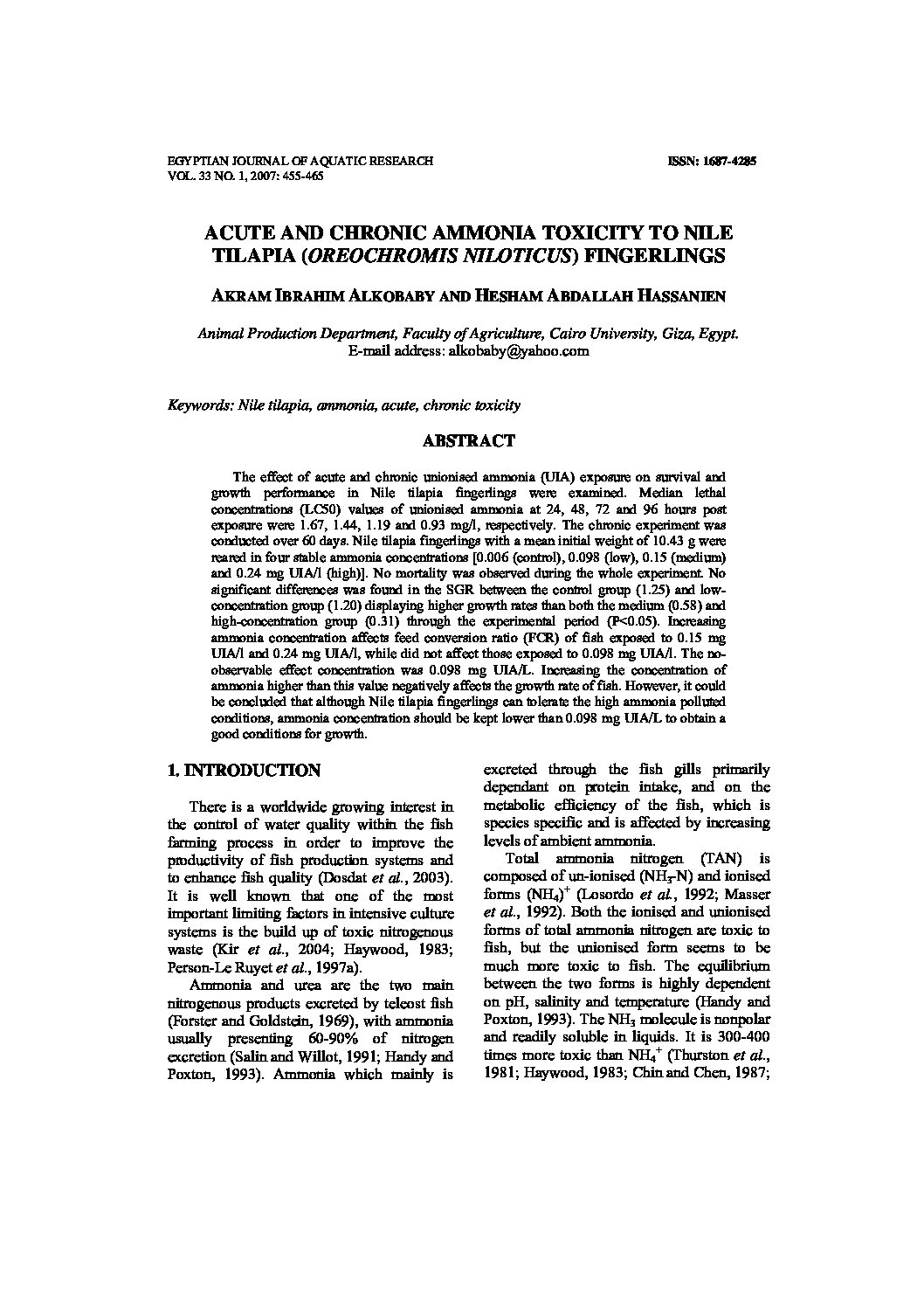Categories
vol-33INDUCE SPAWNING AND LARVAL REARING OF GILTHEAD
SEA BREAM (SPARUS AURATA) COLLECTED FROM FISH
FARMS, EGYPT
M. I. ZAKI*, F. K. AZIZ**, M. EL-G. EL-ABSAWY*
*National Institute of Oceanography and Fisheries.
** Faculty of Science, Alexandria University
[email protected]
Keywords: Sparus aurata, Induce spawning, Pituitary extract, Human chorionic
gonadotropin, Fertilization, Hatching, Survival, Larval growth.
ABSTRACT
Sparus aurata females in captivity were injected with human chorionic gonadotropin
hormone (HCG), pituitary extraction and both them during the spawning season. First
hormonal treatment was applied as cumulative doses required for successful ovulation ranged
from 4500 to 7500 IU\fish, the maximum fertilization percent was 71. The ovulation period
under the influence of this treatment extended up to 14 days. In the second experiment, the
total dose requirement for successful ovulation ranged from 2 to 4 pituitary extractions. /fish
and the maximum fertilization percent recorded was 81, while the longest ovulation period
obtained was 15 days. In the third experiment the total doses required for successful ovulation
ranged from 2 pituitary extractions and 4500 IU to 3 pituitary extraction and 7500 IU/fish. The
maximum fertilization percent recorded was 88, while the ovulation period was extended up to
23 days. The combined treatment gave the highest value of fertilization percent and the longest
ovulation period. Moreover, the results from the combined treatment showed the highest value
of hatching percent of 83.5 when compared to those of HCG was 70.5 % or pituitary extraction
was 80%. The maximum ovulation and fertilization percent was recorded at temperature
ranging between 10 and 16°C. The survival percent of Sparus auratus larvae up to 10 days old
after hatching were greatly affected by both temperature and photoperiod. The proper
temperature ranged between 17 – 22 °C recording the highest survival percent 29 at natural
photoperiod (8 h. light), while it increased to35% under continues illumination. The larvae
starts feeding with rotifer at third day old were measured 0.2 mm. At 11th day old the post
larvae measure 3.1 mm. and being reared to accept next feeding regime represented by
Artemia nauplii.







